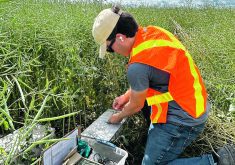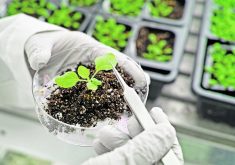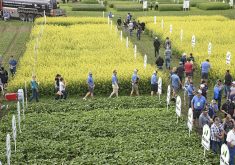Number of organic farmers in Canada:
Verifying the number of organic farms in Canada is not an easy task. News releases and promotional materials from organic groups often report that the number of certified organic farms grew by 66.5 percent in Canada from 2001-2011.
That number is from federal census data, but organic industry estimates tell a different story. The number of Canadian organic farms stopped growing in 2004, and there was a “significant drop” in the number of prairie producers from 2010-2012.
Organic associations representing countries around the globe publish an annual report called the World of Organic Agriculture: Statistics and Emerging Trends. The 2013 edition of the document, which provides organic statistics from 2011, shows almost zero growth in Canada between 2004 and 2011.
Read Also

Farming Smarter receives financial boost from Alberta government for potato research
Farming Smarter near Lethbridge got a boost to its research equipment, thanks to the Alberta government’s increase in funding for research associations.
2004 3,670
2005 3,618
2006 3,566
2007 3,782
2008 3,713
2009 3,914
2010 3,732
2011 3,718
Source: 2013 World of Organic Agriculture
The World of Organic Agriculture data shows the number of organic producers in Canada hit a plateau in the mid 2000s. The industry was expanding rapidly before 2004:
1994 1,355
1996 1,724
1998 1,932
2000 2,981
2002 3,120
Source: 2013 World of Organic Agriculture
Matthew Holmes, executive director of the Canadian Organic Trade Association and one of the report authors, said organic industry statistics are more “rigorous” and “current” than census data.
“The census is accurate and the numbers are based on fact, but the next census will not be until 2016, and so I recommend that the annual data from certifiers is a better reflection of more recent trends since 2011,” he said in an email.
“The census is a point in time, separated by five year intervals. It’s interesting for describing historic or macro-level trends, such as the sudden and significant growth in organic farming since it was first tracked in 2001.”
Organic statistics are based on data provided by certifiers. COTA and Canadian Organic Growers used to co-ordinate data collection, but COTA assumed full responsibility in 2014.


















